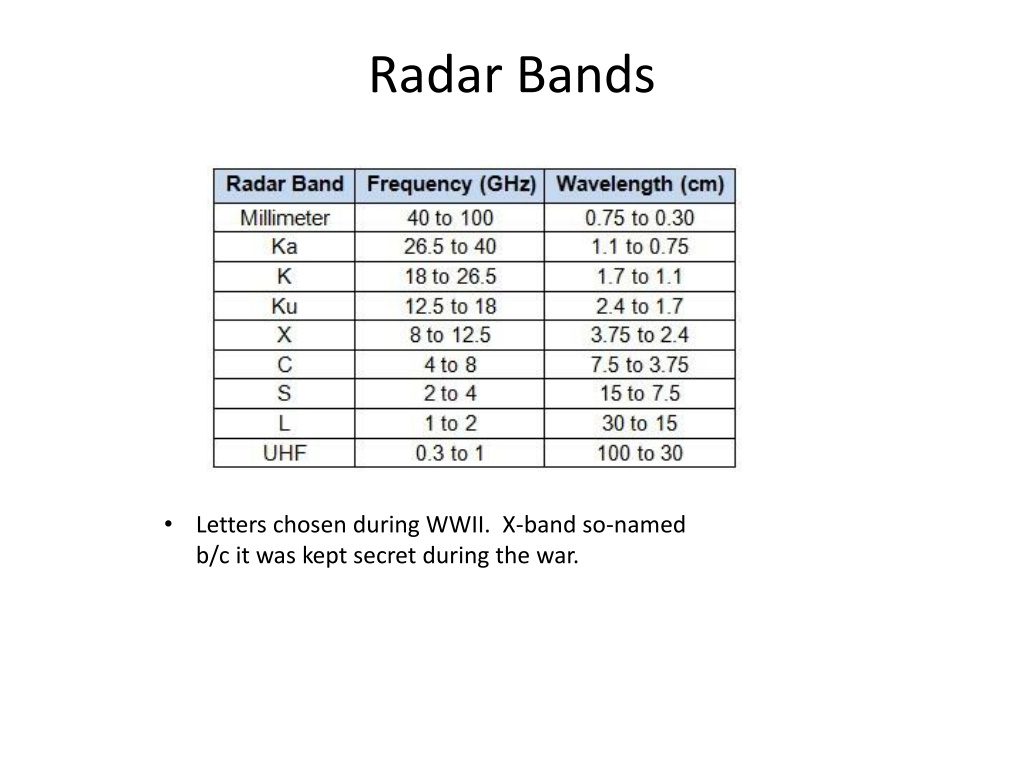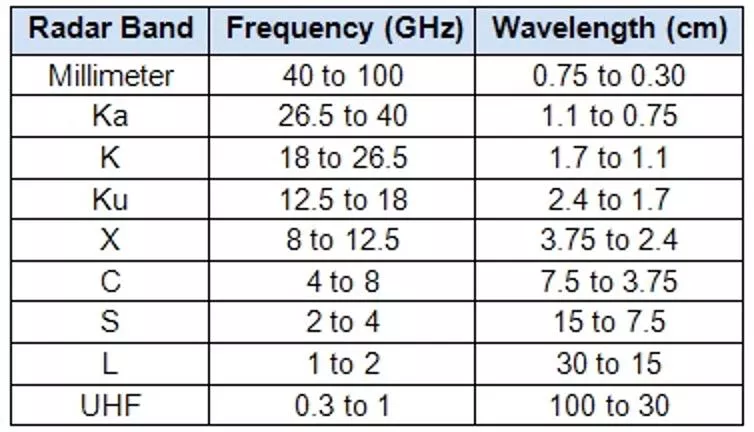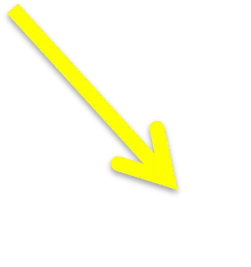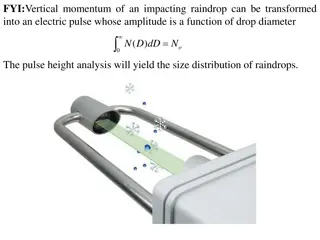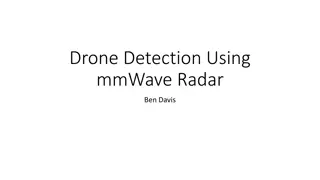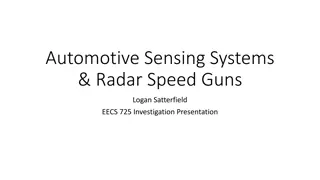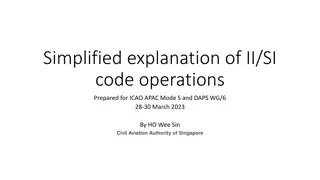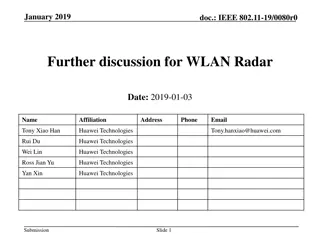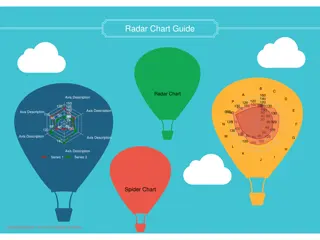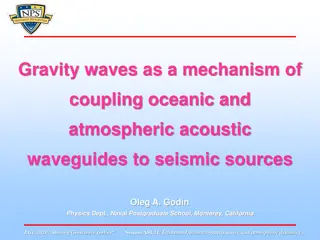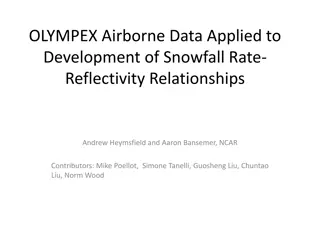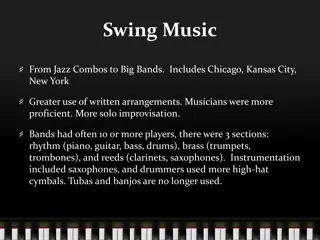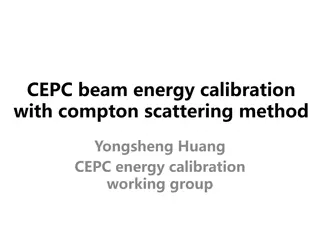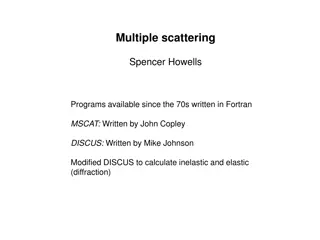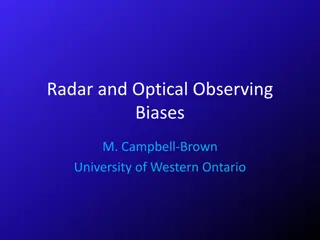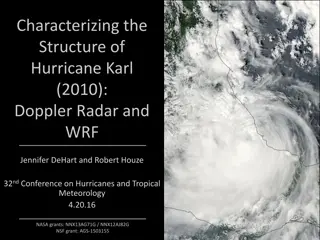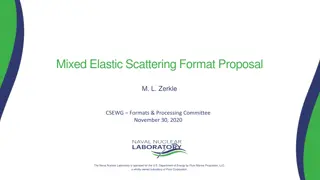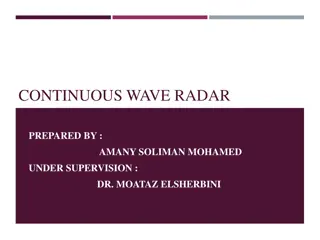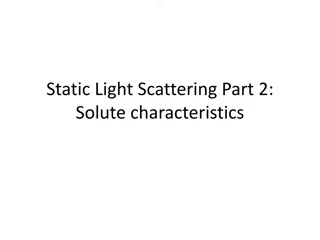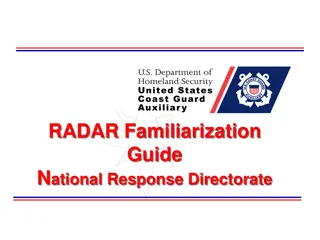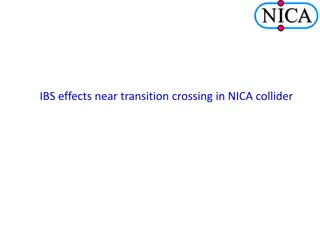Insights into WWII Radar Bands & Scattering Phenomena
the significance of X-band in WWII radar technology and delve into the principles behind multiple scattering, direct transmission, and Monte-Carlo simulations in cloud layers. Understand the impact of single-scattering albedo variations and the two-stream approximation on radiance fields. Learn how to solve related equations and apply boundary conditions for black surface scenarios.
Uploaded on Feb 17, 2025 | 0 Views
Download Presentation

Please find below an Image/Link to download the presentation.
The content on the website is provided AS IS for your information and personal use only. It may not be sold, licensed, or shared on other websites without obtaining consent from the author.If you encounter any issues during the download, it is possible that the publisher has removed the file from their server.
You are allowed to download the files provided on this website for personal or commercial use, subject to the condition that they are used lawfully. All files are the property of their respective owners.
The content on the website is provided AS IS for your information and personal use only. It may not be sold, licensed, or shared on other websites without obtaining consent from the author.
E N D
Presentation Transcript
Radar Bands Letters chosen during WWII. X-band so-named b/c it was kept secret during the war.
Multiple scattering in cloud or aerosol layers REFLECTED =0 ABSORBED = * TRANSMITTED Fraction absorbed + fraction transmitted + fraction reflected = 1
Direct & diffuse transmission REFLECTED ABSORBED =0 = * DIRECT Transmission: Not scattered at all DIFFUSE Transmission: Scattered at least once Fraction absorbed + fraction transmitted + fraction reflected = 1
Monte-Carlo Can simulate each individual photon from sun. Chance of making it through cloud: t*=e */ Chance of being scattered or absorbed: 1-t* Chance of being scattered: Chance of being absorbed: (1-t*)w0 (1-t*)(1-w0)
Low SSA: most absorbed Higher SSA: many still absorbed (multiple scattering means many chances to be absorbed!) Many photons reflected than transmitted (optically thick) A bit unrealistic because g=0 (would be the case for smaller particles or longer wavelengths)
Now SSA = 1 (conservative scattering). No photon absorption. Higher g, more photons make it through rather than being reflected back. g=0.99 is quite unrealistic. g=0.8 to 0.9 for most clouds in the visible.
Two-Stream Approximation Azimuthally averaged radiance field Radiance is constant within a hemisphere. Can be different between upward & downward hemispheres. Phase function is parameterized by g only. Can determine r, t, a from three variables: t*, w0, g
Solving these equations: leads to the general solution:
Next apply boundary conditions ie., the underlying surface is black. A known intensity is downwelling upon the TOA (e.g., from the sun) where
General 2-stream equations where Assumptions: Incoming flux is diffuse. Amazingly, works okay with solar illumination as well! Initially do derivation assumng a black underlying surface. Straightforward to add a nonzero surface albedo later.
Limiting Case: Semi-Infinite Cloud Limit when cloud is VERY optically thick ( * >~ 100) Transmittance t 0. So only absorption and reflectance. Absorption = 1 reflectance in this case
Limiting Case: Semi-Infinite Cloud Asymmetry parameter g of 0.85 is harder to get back out, so reflectance is lower. Note that reflectance is not super high even for ssa =0.999! Implies that MANY scattering events are happening. How many?
Limiting Case: Semi-Infinite Cloud Asymmetry parameter g of 0.85 is harder to get back out, so reflectance is lower. Note that reflectance is not super high even for ssa =0.999! Implies that MANY scattering events are happening. How many?
Limiting Case: Non-absorbing cloud Useful for clouds in the visible, where imaginary part of index of refraction of water & ice is essentially 0 (pure scattering) Reflectance (r) & tramittance (t) only. a=0 ; t=1-r
Limiting Case: Non-absorbing cloud Thicker water cloud Typical Cirrus Cloud As we saw in Cloud Radiative forcing, the cloud albedo ( = reflectance) is important in determining cloud radiative forcing. Even optical depth of 1 still has low reflectance, due to high asymmetry parameter.
General Case: Reflectance & Transmittance g=0.85 g=0.85 Reflectance not very high even for ssa =~ 0.9 (tops out due to strong absorption).
General Case: Absorption g=0.85 Strong absorption for ssa <~ 0.99 !
Final notes Can calculate (monochromatic) fluxes & heating rates using the fact that Can add a non black surface. Can partition the flux transmittance into diffuse & direct components, using
Diffuse & Direct Cloud Transmittance Non-Absorbing cloud (ie cloud in visible); g=0.85 Total Direct Diffuse
Adding in a reflecting surface REFLECTED =0 ABSORBED = * TRANSMITTED surf rsfc We already did this!!
